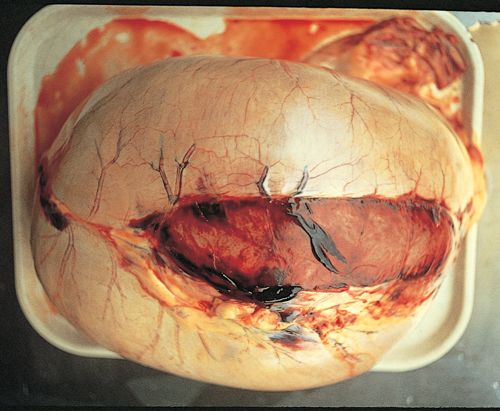Equine Internal Medicine Q&A 01
| This question was provided by Manson Publishing as part of the OVAL Project. See more Equine Internal Medicine questions |
This stomach lesion in the image was found in a four-year-old horse which was killed because of an orthopaedic problem. It shows a classic rupture of the stomach wall along the greater curvature. The haemorrhage along the rupture line can help to distinguish this ante-mortem rupture from the equally common post-mortem rupture. This seromuscular rupture had occurred without an associated rupture of the mucosa.
| Question | Answer | Article | |
| How can gastric rupture occur? | Gastric rupture can occur as a result of overeating, especially readily fermentable foodstuffs such as grain, grass and foodpulp.
|
[[|Link to Article]] | |
| What are the clinical signs associated with a complete rupture of the stomach wall? | Signs of gastric rupture are usually preceded by severe pain, increased heart rate, distended abdomen and sometimes retching. Cyanosis may be present. |
[[ |Link to Article]] | |
